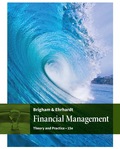
Concept explainers
a.
To explain: The terms lessee and lessor.
a.
Explanation of Solution
Lessee is usually the person who makes the payment in order to use the asset taken on lease. Lesser can be explained as the title-holder of an asset given on lease to the lessee.
b.
To explain: The terms operating lease, financial lease, sale-and-leaseback and combination lease, synthetic lease and SPE
b.
Explanation of Solution
Operating lease is defined as a lease that allows a lessee to use the asset acquired on lease but this does not expresses about the rights of possession of an asset. It is also known as service lease.
Financial lease is defined as a lease in which the lessee is typically a legal owner of an asset during the tenure of lease. It is also known as capital lease or sales lease.
Sale and leaseback can be referred to as leaseback. In this type of lease, a company sells the asset to another company during liquidity crisis and then acquires the same asset on lease to use it. It can be considered as a type of financial lease.
Combination lease is defined as a mixture of both operating and financial lease.
A synthetic lease is an arrangement among a company and a special purpose entity.
It produces to borrow money and purchase equipment. It doesn’t seem to be on the books of the company as an obligation though the amounts of “lease” to really borrowing money guaranteed by the lessee.
A special purpose entity (SPE) is a company set up to simplify the creation of a synthetic lease. It borrows money which is guaranteed by the lessee, purchases equipment, and leases it to the lessee. Its determination is to keep the lessee from having to capitalize the lease and to carry the payments on the books as a liability.
c.
To explain: The terms off-
c.
Explanation of Solution
Off-balance sheet financing is defined as a situation in which operating lease for the lessee and lesser never appeared on the balance sheets of both the parties to a lease agreement. To tackle this problem Accounting Standards Board (ASB) issued a statement named as FASB (Financial Accounting Standards Board) statement 13.
Capitalizing can be defined as incorporation of amounts of leased assets and leased liabilities in balance sheets to report as true and fair picture of balance sheet. It further included reporting of operating lease according to ASB update 2016-02.
d.
To explain: The terms FASB Statement 13.
d.
Explanation of Solution
FASB Statement 13 is a statement issued by ASB that provides information regarding lease provisions and about the procedures to be followed while reporting the leased amounts in balance sheet.
e.
To explain: The term guideline lease.
e.
Explanation of Solution
Guideline lease can be defined as a lease that fulfills all the conditions stated in Internal Revenue Service (IRS) required for a valid lease. It also recognized as tax-oriented lease. Fulfillment of IRS conditions can provide lesser with the benefits of ownership.
f.
To explain: The term residual value.
f.
Explanation of Solution
Residual value can be defined as the market value of a lease asset at the end of its useful life.
g.
To explain: The terms lessee’s analysis and lessor’s analysis.
g.
Explanation of Solution
Lessee’s analysis is explained as analysis done by a lessee before acquiring an asset on lease. Lessee determines whether buying an asset or leasing an asset which among the two options would be more cost effective.
Lessor’s analysis explained as analysis done by a lessor’s which involves determining
h.
To explain: The term net advantage to leasing (NAL).
h.
Explanation of Solution
Net advantage to leasing (NAL) can be defined as the difference between
i.
To explain: The Alternative minimum tax (AMT)
i.
Explanation of Solution
AMT is figured at 20% of the profits which are reported to the stock holders. It is the provision of tax code which needs the profitable firms to pay at least some taxes when such taxes are more than the amount due under the standard tax accounting.
It provides a stimulus to leasing for firms which pays AMT as leasing lowers the profits which are reported to the stock holders.
Want to see more full solutions like this?
Chapter 19 Solutions
EBK FINANCIAL MANAGEMENT: THEORY & PRAC
 Essentials Of InvestmentsFinanceISBN:9781260013924Author:Bodie, Zvi, Kane, Alex, MARCUS, Alan J.Publisher:Mcgraw-hill Education,
Essentials Of InvestmentsFinanceISBN:9781260013924Author:Bodie, Zvi, Kane, Alex, MARCUS, Alan J.Publisher:Mcgraw-hill Education,

 Foundations Of FinanceFinanceISBN:9780134897264Author:KEOWN, Arthur J., Martin, John D., PETTY, J. WilliamPublisher:Pearson,
Foundations Of FinanceFinanceISBN:9780134897264Author:KEOWN, Arthur J., Martin, John D., PETTY, J. WilliamPublisher:Pearson, Fundamentals of Financial Management (MindTap Cou...FinanceISBN:9781337395250Author:Eugene F. Brigham, Joel F. HoustonPublisher:Cengage Learning
Fundamentals of Financial Management (MindTap Cou...FinanceISBN:9781337395250Author:Eugene F. Brigham, Joel F. HoustonPublisher:Cengage Learning Corporate Finance (The Mcgraw-hill/Irwin Series i...FinanceISBN:9780077861759Author:Stephen A. Ross Franco Modigliani Professor of Financial Economics Professor, Randolph W Westerfield Robert R. Dockson Deans Chair in Bus. Admin., Jeffrey Jaffe, Bradford D Jordan ProfessorPublisher:McGraw-Hill Education
Corporate Finance (The Mcgraw-hill/Irwin Series i...FinanceISBN:9780077861759Author:Stephen A. Ross Franco Modigliani Professor of Financial Economics Professor, Randolph W Westerfield Robert R. Dockson Deans Chair in Bus. Admin., Jeffrey Jaffe, Bradford D Jordan ProfessorPublisher:McGraw-Hill Education





